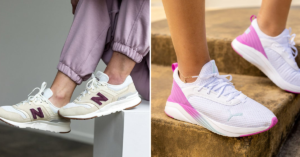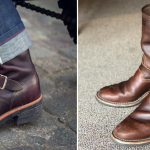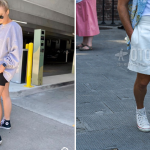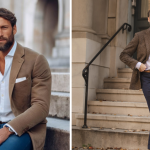Fashion is not just about looking good; it’s about feeling good too. And, if you’re an eco-conscious shopper, fashion enthusiast, or climate activist, you know that feeling good comes from making choices that are kind to the planet. This blog post explores the pivotal role of sustainable fashion in addressing climate change. We will break down the environmental impact of traditional fashion, the ways sustainable practices can reduce carbon footprints, and the significance of ethical sourcing. Furthermore, we’ll touch on slow fashion, energy-efficient production methods, recycling and upcycling, circular fashion, and the influence of consumer choices. Ready to make fashion a force for good? Read on to learn how.
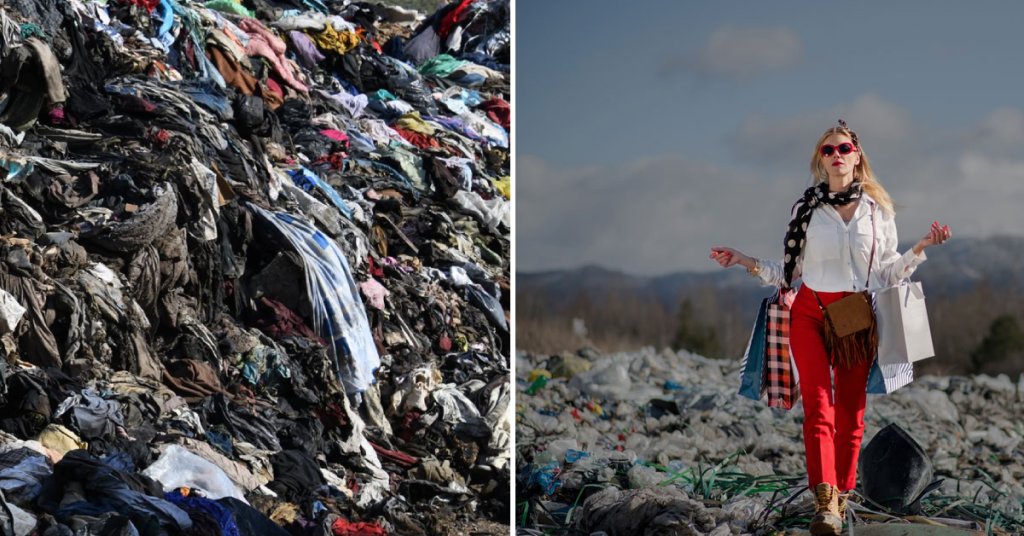
The Environmental Impact of the Fashion Industry
The fashion industry is one of the largest polluters in the world. It accounts for about 10% of global carbon emissions, according to the United Nations Environment Programme (UNEP). Fast fashion, characterized by its rapid production cycles and lower costs, exacerbates this issue. It relies heavily on synthetic fibers like polyester, which emit significantly more greenhouse gases compared to natural fibers.
Another major concern is water consumption. The fashion industry uses vast amounts of water for textile dyeing and processing. For instance, producing a single cotton t-shirt consumes approximately 2,700 liters of water—the amount one person drinks in 2.5 years. Additionally, textile dyeing is the second-largest polluter of water globally, contributing to severe water quality degradation.
Waste is yet another critical issue. Each year, an estimated 92 million tons of textile waste is generated globally. Most of this waste ends up in landfills or is incinerated, releasing harmful pollutants into the atmosphere and further aggravating climate change.
Ways Sustainable Fashion Reduces Carbon Footprint
Sustainable fashion is a growing movement that aims to mitigate the adverse effects of the traditional fashion industry. One of the primary ways it achieves this is by reducing carbon footprints. Brands focused on sustainability often use eco-friendly materials like organic cotton, hemp, and bamboo, which require less water and fewer pesticides.
Another way is through local production. By manufacturing closer to where products are sold, sustainable brands significantly cut down on transportation emissions. This also supports local economies and reduces dependency on global supply chains.
Energy efficiency is also a focus. Sustainable fashion brands are investing in renewable energy sources and implementing energy-saving technologies in their production processes. This shift not only lowers carbon emissions but also sets a benchmark for other industries to follow.
The Importance of Ethical Sourcing and Sustainable Materials
Ethical sourcing is a cornerstone of sustainable fashion. It ensures that the raw materials and labor used in production are obtained in a manner that respects human rights and the environment. Fair trade certifications and transparency in supply chains are essential components of ethical sourcing.
Sustainable materials play a significant role as well. Organic cotton, for example, is grown without harmful pesticides and synthetic fertilizers, making it a better choice for the environment and farmers. Recycled materials, such as recycled polyester, reduce the need for virgin resources and lessen the overall environmental impact.
Innovative materials are also making their way into sustainable fashion. Mushroom leather, for instance, is a biodegradable alternative to traditional leather. Similarly, algae-based fabrics offer a renewable and biodegradable option for creating textiles, further pushing the envelope of what sustainable materials can achieve.
The Role of Slow Fashion in Mitigating Climate Change
Slow fashion is a movement that advocates for quality over quantity. It encourages consumers to buy fewer, but better, items that will last longer. This approach directly counters the fast fashion model and significantly reduces waste and resource consumption.
Artisanal craftsmanship is a key aspect of slow fashion. By focusing on handmade, well-crafted items, slow fashion brands create products that are built to last. This reduces the frequency of purchases and the demand for new materials, thus lowering the overall carbon footprint.
Furthermore, slow fashion promotes thoughtful consumption. It encourages consumers to consider the lifecycle of their clothing, from production to disposal, fostering a more sustainable mindset and contributing to long-term environmental benefits.
Energy-Efficient Production Methods in Sustainable Fashion
Energy-efficient production methods are crucial in the fight against climate change. Many sustainable fashion brands are adopting these methods to minimize their environmental impact. For example, using renewable energy sources like solar or wind power in factories can significantly reduce carbon emissions.
Innovations in dyeing technologies are also making a difference. Traditional textile dyeing consumes large amounts of water and energy and releases toxic chemicals. New methods, such as waterless dyeing, not only save water but also reduce energy consumption and eliminate the use of harmful substances.
Additionally, advancements in fabric production, like 3D knitting, allow for garments to be produced with minimal waste. These technologies enable precise manufacturing, which means fewer resources are used, and excess materials are avoided.
The Impact of Recycling and Upcycling on Reducing Waste
Recycling and upcycling are at the heart of sustainable fashion. These practices help minimize waste and reduce the need for virgin materials. Recycling involves processing used materials to create new products, while upcycling transforms waste into items of equal or greater value.
Textile recycling is becoming increasingly popular. Brands collect used garments and repurpose the fibers to make new ones. This process not only reduces landfill waste but also decreases the demand for new raw materials, conserving natural resources.
Upcycling, on the other hand, adds a creative twist. Designers take discarded items and give them new life as unique fashion pieces. This not only keeps waste out of landfills but also promotes a culture of creativity and sustainability within the fashion industry.
Circular Fashion: Extending the Life Cycle of Clothing
Circular fashion is an innovative approach that aims to extend the lifecycle of clothing. It involves designing products with their entire lifecycle in mind, ensuring that they can be reused, recycled, or composted at the end of their useful life.
One strategy is designing for durability. By creating high-quality garments that can withstand the test of time, brands encourage consumers to keep their clothes longer, reducing the frequency of new purchases.
Repair and resale services also play a role in circular fashion. Brands like Patagonia offer repair programs to extend the life of their products. Additionally, resale platforms allow consumers to buy and sell pre-loved items, keeping them in circulation and out of landfills.
The Influence of Consumer Choices on Sustainable Fashion Practices
Consumers hold significant power in driving sustainable fashion practices. Every purchase decision sends a message to brands about what values and practices are important. By choosing sustainable options, consumers can influence the market and encourage more brands to adopt eco-friendly practices.
Awareness is the first step. Educating oneself about the environmental impact of fashion and the benefits of sustainable alternatives is crucial. Knowledge empowers consumers to make informed decisions that align with their values.
Supporting sustainable brands is another impactful action. By choosing to buy from companies that prioritize sustainability, consumers can help these brands thrive and set an example for others in the industry.
Government and Industry Initiatives Supporting Sustainable Fashion
Governments and industry organizations play a vital role in promoting sustainable fashion. Regulations and policies that encourage eco-friendly practices can drive significant change across the industry.
One example is the European Union’s Circular Economy Action Plan, which aims to make sustainable products the norm and reduce waste. This plan includes measures to improve product design, promote circular business models, and encourage sustainable consumption.
Industry initiatives, such as the Fashion Pact, bring together major fashion brands committed to reducing their environmental impact. These collaborations foster innovation and provide a platform for sharing best practices, driving the industry toward a more sustainable future.
Challenges and Opportunities for Sustainable Fashion
While sustainable fashion offers numerous benefits, it also faces challenges. High production costs, limited consumer awareness, and resistance to change within the industry can hinder progress. However, these challenges also present opportunities for innovation and growth.
Technological advancements offer promising solutions. Emerging technologies like blockchain can enhance transparency in supply chains, ensuring ethical sourcing and reducing fraud. Innovations in material science can lead to the development of new, sustainable fabrics.
Collaboration is another key opportunity. Partnerships between brands, governments, and NGOs can amplify efforts and drive systemic change. By working together, stakeholders can overcome challenges and create a more sustainable fashion industry.
FAQs about Sustainable Fashion’s Impact on Climate Change
Is sustainable fashion more expensive?
While some sustainable fashion brands may have higher price points due to their eco-friendly practices, others offer affordable options. It ultimately depends on the brand and its production methods.
Can sustainable fashion be trendy?
Yes, sustainable fashion can be both stylish and trendy. Many brands are incorporating sustainability into their designs and keeping up with current trends while also prioritizing ethical and eco-friendly practices.
How can I support sustainable fashion as a consumer?
You can support sustainable fashion by educating yourself about the environmental impact of the industry, choosing to buy from eco-friendly brands, and extending the life of your clothing through repair or resale.
What are the environmental benefits of sustainable fashion?
Sustainable fashion significantly reduces waste, lowers carbon emissions, and conserves water and natural resources. By prioritizing eco-friendly materials and production processes, the sustainable fashion industry aims to minimize its overall environmental footprint.
How can I identify sustainable fashion brands?
Look for certifications and labels such as GOTS (Global Organic Textile Standard), OEKO-TEX, and Fair Trade. Additionally, investigate brands’ transparency regarding their sourcing, production practices, and commitment to ethical labor standards.
Are second-hand clothes a sustainable option?
Yes, purchasing second-hand clothing is a sustainable choice. It extends the life cycle of garments, reduces demand for new production, and decreases textile waste in landfills. Thrift shopping and utilizing resale platforms are excellent ways to embrace sustainable fashion while discovering unique pieces.
Can I make my wardrobe more sustainable without buying new clothes?
Certainly. You can adopt practices such as clothing swaps with friends, upcycling old garments into new creations, and engaging in repair techniques to prolong the life of your existing items. This approach fosters sustainability while promoting creativity and resourcefulness.
What role do social media and influencers play in sustainable fashion?
Social media and influencers can significantly raise awareness of sustainable fashion by highlighting eco-friendly brands and practices. They provide a platform for educating consumers and inspiring them to make more responsible fashion choices, ultimately influencing market trends toward sustainability.
Conclusion
Sustainable fashion is not just a trend; it’s a necessary evolution for the industry. By reducing environmental impact, promoting ethical sourcing, and encouraging mindful consumption, sustainable fashion can play a pivotal role in addressing climate change.
Whether you’re an eco-conscious shopper, a fashion enthusiast, or a climate activist, your choices matter. Supporting sustainable brands, advocating for industry change, and spreading awareness can make a significant difference.
Ready to make a positive impact? Explore our collection of sustainably sourced, ethically produced garments, and join the movement toward a more sustainable future. Together, we can make fashion a force for good.


